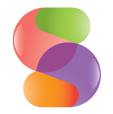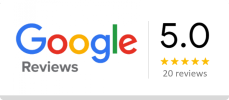When you’re investing in Google Ads, every click costs money. But not every click leads to a sale. That’s where a well-designed landing page comes in. It’s the bridge between your ad and the action you want users to take. And when done right, a landing page can dramatically increase your conversion rate.
So how do you build a landing page that turns visitors into leads or customers? Let’s break it down.
1. Understand the Intent Behind the Click
Before you even start designing your page, think about what the user is expecting after they click your ad. Are they looking for a quote? A free trial? To make a booking? The more aligned your landing page is with the ad’s message, the more likely they are to convert.
Tip: Match your landing page headline with the text from your ad. It helps reinforce that visitors are in the right place.
2. Keep It Focused and Distraction-Free
Your landing page should have one goal and one call to action (CTA). No menus, no links to other pages, no distractions. Everything on the page should support the CTA.
Whether it’s a contact form, a phone number, or a “Buy Now” button, make sure it’s front and centre.
3. Write a Clear, Compelling Headline
Your headline should instantly communicate what the offer is and why it matters. Avoid clever puns or vague slogans. Instead, speak directly to the visitor’s need.
Examples:
- “Get a Free Quote in Under 60 Seconds”
- “Book Your Auckland House Renovation Consultation Today”
4. Use Trust Signals
Visitors want to know they can trust you. Add social proof like client logos, testimonials, case studies, or trust badges (e.g., secure payment, money-back guarantee, etc.).
If you’re a local business, mention your location to build credibility. Google reviews, awards, or before-and-after photos can go a long way.
5. Make Your CTA Stand Out
Use a strong, action-oriented CTA like:
- “Get My Free Quote”
- “Download Now”
- “Book a Free Demo”
Make the CTA button a contrasting color that stands out. Avoid generic CTAs like “Submit.”
Place the button above the fold and repeat it further down the page for scrollers.
6. Optimise for Mobile First
Most Google Ads traffic comes from mobile devices. Your landing page must load fast and look great on smartphones. Use large fonts, buttons that are easy to tap, and responsive design that adapts to different screen sizes.
7. Use High-Quality Visuals
Images should support your message, not distract from it. Include photos of your product, service in action, or happy customers. If possible, use short explainer videos or animations to increase engagement. But keep load times in mind.
8. Keep Forms Short
If you’re using a form, ask only for what you absolutely need. The longer the form, the more likely people are to abandon it. For lead generation, name, email, and phone number are usually enough.
9. Include a Thank You Page
Once someone fills out your form or takes action, redirect them to a thank you page. Use this page to:
- Confirm the action (“Thanks for your request!”)
- Set expectations (“We’ll get back to you within 24 hours”)
- Offer additional steps (follow your socials, check out more resources, etc.)
10. A/B Test Everything
No landing page is perfect the first time. Test different versions of headlines, CTAs, form placements, and visuals to see what works best.
Use tools like Google Optimize, Unbounce, or even A/B testing features within platforms like WordPress and Shopify.
Final Thoughts
A great Google Ads campaign can bring traffic to your site. But it’s your landing page that determines whether that traffic turns into real business.
By keeping your page focused, fast, and user-friendly, and by aligning your message from ad to page, you’ll see higher conversion rates and better ROI on your ad spend.
Get in touch with website design Auckland company to help you create high-converting landing pages for your Google Ads. We build performance-driven websites that turn clicks into customers. Let’s talk!

